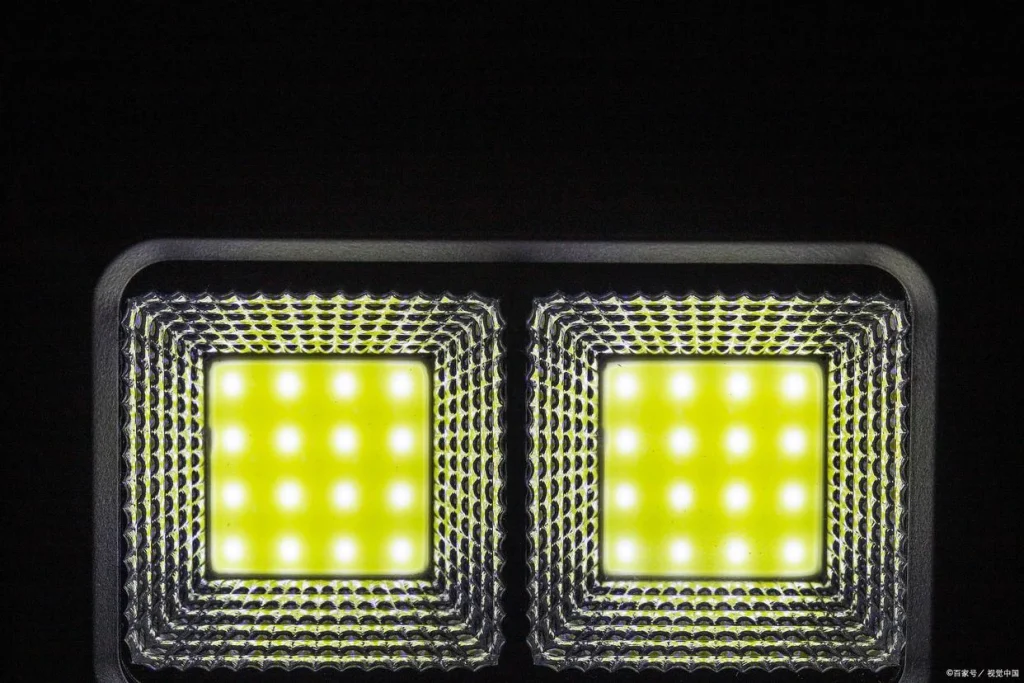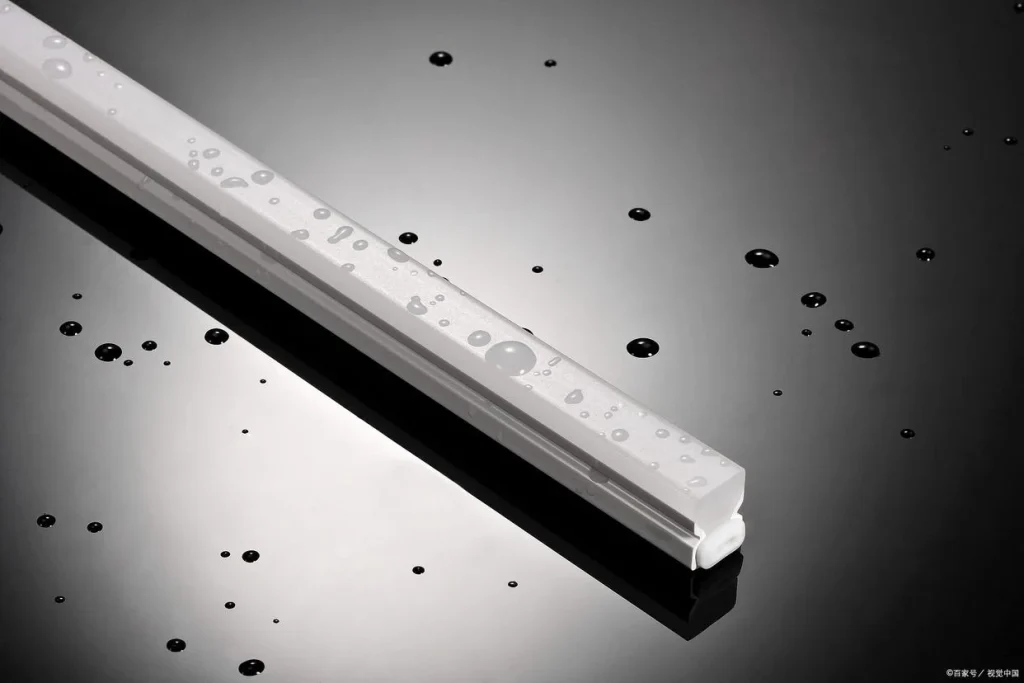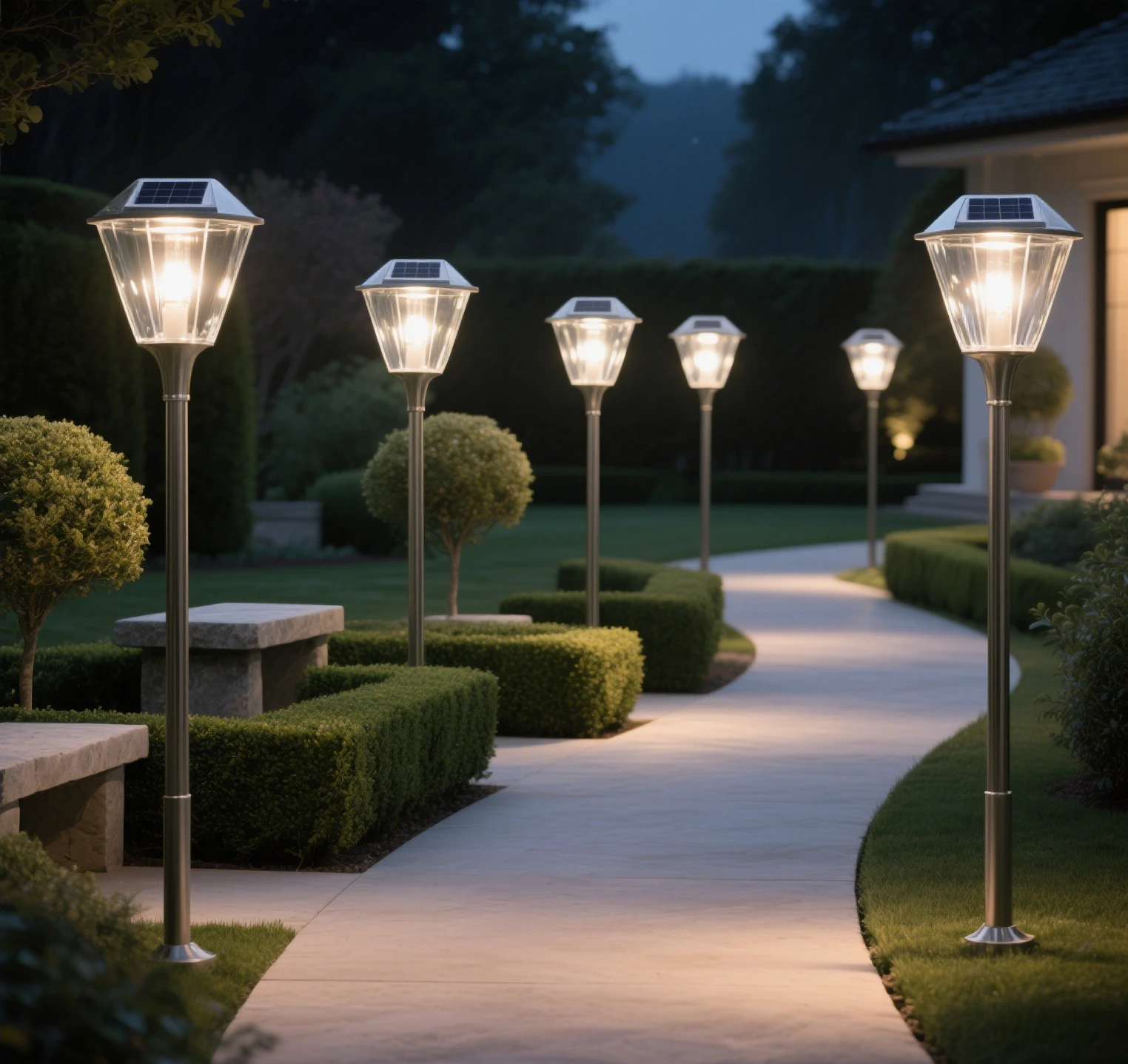Solar pathway lights, as a green lighting solution, have gained widespread adoption in recent years for roads, parks, and residential areas in both urban and rural settings. LED lighting, as the core component of solar pathway light systems, not only significantly enhances system efficiency but also provides users with lower maintenance costs and a superior lighting experience. This article will delve into the critical role of LED lighting in solar pathway lights, analyze its key advantages, and explain how it drives solar lighting systems toward greater efficiency and environmental sustainability.

Why LED Lighting is the Ideal Choice for Solar Pathway Lights
Solar pathway lights rely on solar panels to convert sunlight into electricity, which is stored in batteries for nighttime illumination. Given the limited energy supply of solar systems, selecting highly efficient lighting components is crucial. LED lighting, with its exceptional performance, has become the preferred light source for solar pathway lights. Below are the primary advantages of LED lighting in solar lighting systems:
1. High Energy Efficiency: The Core of Energy Saving
LED lighting is far more energy-efficient than traditional light sources, such as incandescent or fluorescent lamps. At the same brightness level, LED lighting consumes only one-third to one-half the energy of traditional sources. This low energy consumption allows solar pathway lights to provide extended illumination with limited battery capacity, making them particularly suitable for remote areas or regions with unstable power supplies. Highly efficient LED lighting also reduces the required solar panel size, lowering overall system costs.
2. Long Lifespan: Reducing Maintenance Costs
LED lighting typically has a lifespan exceeding 50,000 hours, far surpassing the few thousand hours of traditional light sources. This means that LED lighting rarely needs replacement during the lifecycle of a solar pathway light, significantly reducing maintenance costs and labor expenses. Additionally, the long lifespan of LED lighting minimizes waste, aligning with the environmental principles of green lighting.

3. Low Energy Consumption: Optimizing System Design
Due to the high efficiency of LED lighting, it requires less solar panel and battery capacity. This not only makes solar lighting systems more compact and cost-effective but also enhances their sustainability. For instance, in some small-scale solar pathway light designs, the low energy consumption of LED lighting ensures functionality even during cloudy or rainy weather.
4. Directional Lighting: Reducing Light Pollution
Compared to traditional light sources, LED lighting enables precise directional illumination, focusing light on areas that need it, such as roads or pathways. This feature not only improves lighting efficiency but also significantly reduces light pollution, preventing unnecessary light spillage from disturbing the surrounding environment or wildlife.
5. Instant Startup: Immediate Illumination
LED lighting can reach maximum brightness instantly upon being powered, with no warm-up time required. This is particularly important for solar pathway lights, which need to provide illumination promptly at dusk or night to ensure the safety of pedestrians and vehicles.
6. Heat Dissipation Design: Ensuring Stable Performance
High-quality LED lighting is typically equipped with advanced heat dissipation designs, ensuring stable performance even in high temperatures or extreme weather conditions. This heat dissipation extends the lifespan of LED lighting and ensures reliable operation of solar pathway lights in various environments.
7. Safety and Reliability: Suitable for Diverse Scenarios
LED lighting operates on low-voltage direct current, reducing the risk of electrical accidents, making it ideal for outdoor solar pathway lights. Additionally, the solid-state design of LED lighting provides high resistance to impact and vibration, enabling it to withstand rain, wind, and other adverse conditions, ensuring the overall reliability of the system.
8. Eco-Friendly Lighting: A Green Choice
LED lighting contains no harmful substances like mercury, and its high efficiency and long lifespan reduce energy consumption and waste generation. This eco-friendly lighting approach aligns perfectly with the green principles of solar pathway lights, contributing significantly to sustainable development.
9. Smart Control: Enhancing User Experience
LED lighting integrates easily with smart control systems, allowing users to adjust brightness, color temperature, or even scheduling remotely via wireless networks or mobile applications. For example, some advanced solar pathway lights are equipped with light sensors and timers that automatically adjust illumination intensity based on ambient light, further improving energy efficiency.
LED Lighting Drives the Widespread Adoption of Solar Pathway Lights
Thanks to the numerous advantages of LED lighting, solar pathway lights are increasingly being adopted worldwide. From urban parks to rural trails, from residential communities to commercial parking lots, solar pathway lights have earned user trust due to their low cost, high efficiency, and eco-friendly characteristics. Particularly in areas with inadequate power infrastructure, solar pathway lights provide safe and reliable lighting solutions for residents.
Take a well-known brand’s solar pathway light as an example: its product incorporates high-quality LED lighting, combined with efficient solar panels and smart control systems, achieving not only all-weather illumination but also significantly reduced energy consumption and maintenance costs. This product design fully demonstrates the pivotal role of LED lighting in solar lighting systems.
Future Trends
As technology continues to advance, the application of LED lighting in solar pathway lights holds even brighter prospects. Here are some trends to watch:
- Higher Energy Efficiency: The development of new LED chips will further improve light efficiency, reducing energy consumption.
- Smart Upgrades: Through IoT technology, solar pathway lights will enable more precise remote management and data analysis.
- Customized Designs: The flexibility of LED lighting will drive personalized applications of solar pathway lights in various scenarios, such as decorative or emergency lighting.
Conclusion
As the core component of solar pathway light systems, LED lighting significantly enhances system performance and reliability with its high energy efficiency, long lifespan, low energy consumption, and eco-friendly characteristics. Whether reducing light pollution, optimizing heat dissipation, or integrating smart control systems, LED lighting is propelling solar lighting systems toward greater efficiency and sustainability. In the future, as technology advances, LED lighting will continue to inject new vitality into the adoption and application of solar pathway lights, making greater contributions to global green lighting initiatives.

Comments